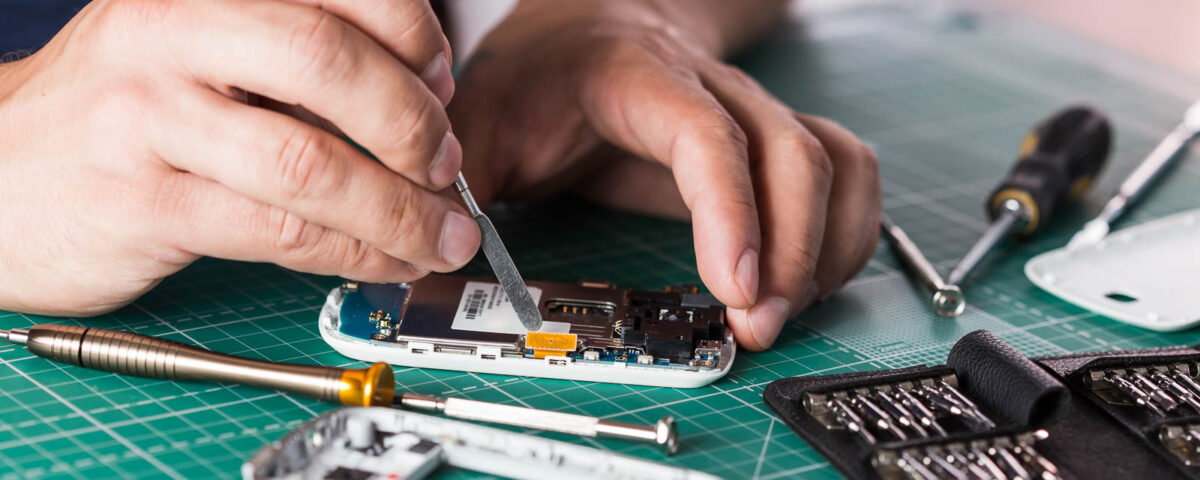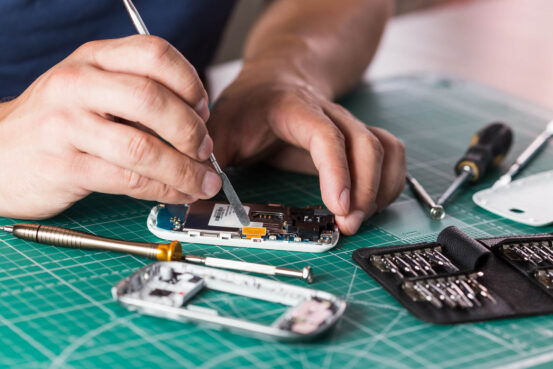Extending the lifespan of smartphones and other electronics by just one year would save the EU as much carbon emissions as taking 2 million cars off the roads annually, a new study finds.
Coolproducts experts have assessed the climate benefits of making Europe’s smartphones, notebooks, washing machines and vacuum cleaners more durable. [1]
The study found that extending the lifetime of the EU’s stock of these products by five years would save almost 10 million tonnes of emissions (CO2eq) annually by 2030. This is equivalent to taking 5 million cars off the roads for a year, roughly the number of cars registered in Belgium. Even just a one-year extension would result in 4 million tonnes of emissions savings annually, equivalent to taking all Danish cars off the roads.
The report was published today by the European Environmental Bureau (EEB) on behalf of the Coolproducts and Right to Repair campaigns. [2]
These high figures are due to the vast amounts of energy and resources involved in producing and distributing new products as well as disposing of old ones.
The climate impact of the so-called non-use phases is often overlooked in product policy, with legislation so far focusing on reducing the energy needed to power them rather than on their production. Those embedded emissions continue to be overlooked, despite one study concluding that if they were accounted for in goods imported to Europe, the EU would not have achieved any emissions reductions since 1990. [3]
Facts and figures
-
The production of Europe’s smartphones has the largest climate impact among the products analysed, whereas washing machines top the charts when the energy they require during use is included;
-
The full lifecycle of Europe’s smartphones is responsible for 14 million tonnes of emissions (CO2eq) each year, which is more than the carbon budget of Latvia in 2017. Increasing their lifetime by just one year would save more than 2 million tonnes of emissions;
-
The average lifespan of a smartphone in Europe is three years, with annual sales of almost 211 million units. Laptops last about six years, while washing machines and vacuum cleaners 11.4 and 6.5 respectively;
-
Extending the lifespans of smartphones and laptops by increasing repairability must be a priority as emissions linked to manufacturing are the most important for these products;
-
For vacuum cleaners and washing machines, the increasing addition of onboard computers, displays or batteries are making their non-use phases more carbon intensive;
-
With very few exceptions, such as old inefficient products (e.g. high-powered vacuum cleaners which are no longer allowed on the market), repair is always better than replacement for all the products covered.
The Right to Repair
The study coincides with the growth of the Right to Repair movement in Europe, [4] which aims to counter planned obsolescence – the practice whereby products are poorly designed, impossible or too expensive to repair, and are prematurely replaced.
While it is hard to assess whether companies are purposely shortening the lifespans of electronics, the proportion of defective devices being replaced by consumers grew from 3.5% in 2004 to 8.3% in 2012. [5]
NGOs recently succeeded in pushing for EU-wide regulation aimed at extending the lifespan of a small group of products including TVs, fridges, washing machines, dishwashers and lighting products. As of 2021, manufacturers will have to ensure that these products can be easily disassembled and will have to make spare parts and repair information available to professional repairers. [6] The new rules are expected to be officially adopted by the European Commission in September or October 2019.
Jean-Pierre Schweitzer, Policy Officer for the Circular Economy at the EEB, said:
This study is further proof that Europe can’t meet its climate obligations without addressing our production and consumption patterns.
The climate impact of our disposable smartphone culture is far too high. We can’t afford to keep replacing them every few years. We need products that last longer and can be repaired if they break
As public support for longer lasting products and climate action grows, we have an opportunity to radically rethink the way our products are designed and produced. The EU can be a leader on this front, having already pioneered some ground-breaking laws forcing manufacturers to make certain products more easily repairable.
Notes to Editors
[1] https://coolproducts.squarespace.com/policy/revealed-the-climate-cost-of-disposable-smartphones
[2] The Coolproducts campaign works to ensure product policy benefits people and the planet. It’s led by the European Environmental Bureau (EEB) and ECOS, two prominent Brussels-based NGOs. The Right to Repair coalition brings together policy experts, repair activists and consumer groups to promote repairable products and access to repair information.
[3] https://buyclean.org/media/2018/10/EU-Carbon-Loophole-Report-Final_v1.pdf
[4] https://www.bbc.com/news/science-environment-46797396
[5] https://www.oeko.de/en/press/press-releases/archive-press-releases/2015/reality-check-obsolescence/
[6] https://coolproducts.squarespace.com/news/europe-paves-way-for-right-to-repair




